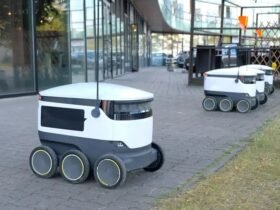In recent years, technology has revolutionized various sectors, and interior design is no exception. The fusion of technology and design has transformed how spaces are conceptualized, created, and experienced. From digital tools that aid in visualization and planning to smart home systems that enhance functionality, technology plays a pivotal role in shaping modern interiors. This article explores the multifaceted impact of technology on contemporary interior design, highlighting key innovations and their benefits.
Smart Home Technology
The advent of smart home technology has fundamentally changed how we interact with our living spaces. Integrated systems that control lighting, heating, security, and entertainment have become increasingly common in modern interior design. Smart lighting systems, such as those from Philips Hue or LIFX, offer customizable lighting solutions that can be adjusted for different moods and times of the day, enhancing both functionality and aesthetics.
Smart thermostats like the Nest Learning Thermostat optimize energy usage, contributing to both comfort and sustainability. Home security systems, such as those from Ring or Nest, integrate with other smart devices to provide comprehensive security solutions that can be monitored and controlled remotely.
Additionally, voice-activated assistants like Amazon’s Alexa and Google Assistant offer convenient control over various smart home devices, making the home environment more responsive and personalized. The integration of smart home technology extends to the use of motorized blinds, which offer automated control over natural light and privacy, further enhancing the convenience and functionality of modern interiors.
Visualization and Planning Tools
One of the most significant technological advancements in interior design is the development of sophisticated visualization and planning tools. Traditional methods of sketching and physical mood boards have given way to digital platforms that offer enhanced precision and creativity. Tools like AutoCAD, SketchUp, and 3D Studio Max allow designers to create detailed floor plans and 3D models, enabling them to experiment with different layouts, colors, and textures before making any physical changes.
Virtual Reality (VR) and Augmented Reality (AR) have further revolutionized the design process. VR allows clients to immerse themselves in a virtual version of their space, experiencing it in a way that 2D drawings and even 3D models cannot match. AR, on the other hand, superimposes digital elements onto the real world, allowing designers and clients to visualize how new furniture or decor items will look in an existing space. These technologies not only enhance creativity but also improve communication between designers and clients, ensuring a clearer understanding of the proposed designs.
Sustainable Design Practices
Technology has also played a crucial role in promoting sustainable design practices. The increasing availability of eco-friendly materials and products, made possible by advancements in technology, has allowed designers to create environmentally responsible interiors without compromising on style or functionality. Innovations in recycling and upcycling materials contribute to reducing waste and conserving resources.
Furthermore, technology enables better energy management and efficiency in homes. Smart meters and energy-efficient appliances help reduce energy consumption, while advanced insulation materials and windows contribute to maintaining optimal indoor temperatures, reducing the need for heating and cooling. These technological advancements not only help in creating greener homes but also support broader environmental goals.
Customization and Personalization
Modern interior design increasingly emphasizes customization and personalization, a trend that has been significantly bolstered by technological advancements. Digital fabrication techniques, such as 3D printing, allow for the creation of bespoke furniture and decor items tailored to individual preferences and specific spatial requirements. This level of customization was previously unattainable with traditional manufacturing methods.
Additionally, online platforms and apps have made it easier for individuals to find unique pieces and personalize their spaces. Websites like Houzz, Pinterest, and various virtual marketplaces provide endless inspiration and access to a wide range of products, enabling homeowners to curate spaces that reflect their personal style. The ability to visualize these items within a virtual representation of their home further aids in making informed decisions.
Enhanced Collaboration
Technology has significantly enhanced collaboration within the field of interior design. Cloud-based platforms and project management tools facilitate seamless communication and collaboration among designers, architects, contractors, and clients. Tools like Trello, Asana, and Slack enable teams to share ideas, track progress, and manage tasks efficiently, ensuring that projects stay on schedule and within budget.
These collaborative tools are particularly valuable in large-scale projects where multiple stakeholders are involved. Real-time updates and the ability to access project information from anywhere in the world streamline the design process and reduce the likelihood of miscommunication and errors. Enhanced collaboration ultimately leads to more cohesive and successful design outcomes.
The Future of Technology in Interior Design
Looking ahead, the role of technology in interior design is set to expand even further. The integration of Artificial Intelligence (AI) and Machine Learning (ML) into design tools will provide new levels of insight and efficiency. AI algorithms can analyze user preferences and behavior to offer personalized design suggestions, while ML can optimize space planning and resource allocation based on data-driven insights.
The Internet of Things (IoT) will continue to evolve, with more devices becoming interconnected and capable of seamless communication. This will lead to even smarter homes that adapt to the needs and preferences of their occupants. Advanced robotics and automation may also play a role in the future, with robotic furniture and appliances that can transform spaces and perform various functions autonomously.
In the realm of interior design, AI is altering e-mail marketing strategies, enabling designers and retailers to deliver personalized recommendations and exclusive offers tailored to individual tastes and preferences.
The Role of E-commerce and Online Marketplaces
The rise of e-commerce and online marketplaces has significantly impacted modern interior design by providing unprecedented access to a wide array of products and services. Platforms such as Amazon, Wayfair, and Etsy allow consumers to browse and purchase furniture, decor, and other interior design elements from the comfort of their homes. This convenience is coupled with the ability to compare prices, read reviews, and explore a vast range of styles and options that might not be available locally.
The intersection of technology and interior design has opened up a world of possibilities, transforming how we create and experience our living spaces. From powerful visualization tools and smart home systems to sustainable practices and enhanced collaboration, technology has become an integral part of modern interior design. As technological advancements continue to evolve, they will undoubtedly bring new innovations and opportunities, further enhancing the way we design and inhabit our spaces. The future of interior design is not just about aesthetics but also about creating intelligent, responsive, and sustainable environments that improve our quality of life.








